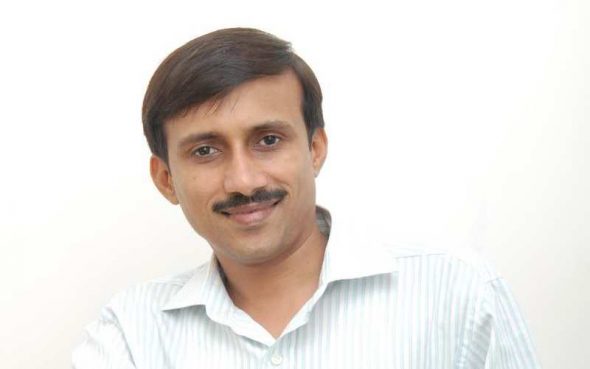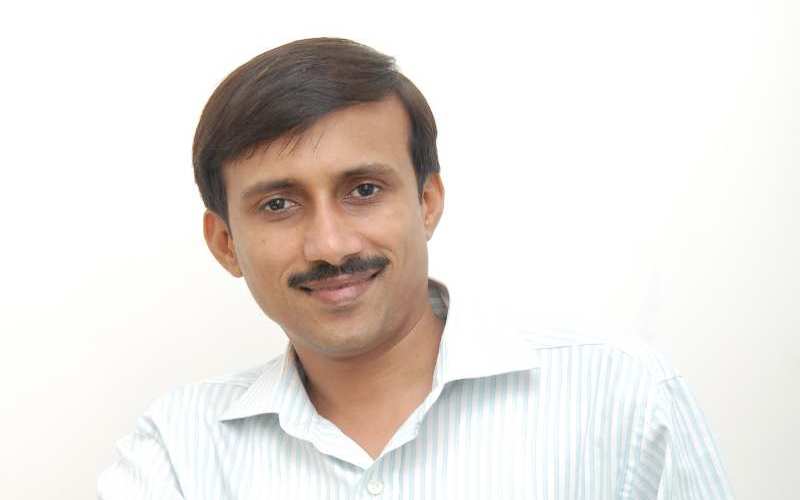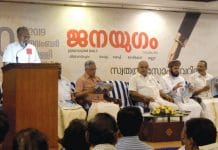
What is the most important thing for India’s popular taxi service Meru Cabs, you ask ? The reply is simple! It is open source technology. Technology is not at the back-end of this taxi service. It is riding from the front and is driven by open source. In an exclusive tete a tete with Nilesh Sangoi, CTO, Meru Cabs, Diksha P. Gupta from Open Source For You magazine explored how open source technology is one of the most important part of Meru Cabs. Read on…
One of the most popular taxi services of India, Meru Cabs, is unabashedly driven by open source technology. And technology is just not the back-end of the service. With tools like Web and mobile apps, technology runs on the forefront of it. Nilesh explains, “This entire business is built on the foundation of technology. Technology is not just an enabler in our case. Ours is a technology business altogether. From the very first day in 2007, when our first car went on road, we had ensured that each car is fitted with a GPS/GPRS and we have an automated dispatch system at the back-end. From the very beginning, we knew that this will be a high-scale business which cannot be run by calling the driver and telling him where to go. We ensured that the system knows which cab is at which location, and its status- whether it is free, hired or the driver is no longer on duty. We wanted the system to know all of these details and based on the customer’s location, the system should identify most ideal cab for that customer and automatically dispatch that.”
Most of the company’s business is driven by its applications. The tech expert shares, “A larger portion of our bookings is moving into apps. Almost 75 per cent of our bookings are now digital, and this number is going really fast. A lot of migration is happening from the other channels to app, which means the usage of technology is increasing even further. Any which way, technology was never at the back-end of our system. Even in the call centre, back-end was always managed through technology. Now, what has changed is that the technology is much more visible to the end-consumer. So, technology is on the forefront when it comes to Merucabs.”
Not possible without open source…
Meru’s tryst with open source began about six years back, with creation of the website, which was entirely on open source. They started with LAMP. Nilesh says, “Linux had arrived by then and was pretty popular. Most of the Web servers then were on Apache.”
Meru Cabs embraces open source technologies day in and day out, and is proud to do that as well. Nikesh asserts, “I don’t think any IT decision maker can say that they don’t use open source technology in the modern day times. Open source is a part of life for people like us now-a-days. Even the traditional vendors, who are considered to be at the different end of open source have also started embracing open source technology. Open source is becoming mainstream and will only get bigger and better.”
“Our Web backend, our mobile app backend, et al, is on open source. Whether it is about network management, network monitoring or analytics, we use various open source tools on a regular basis. We use LAMP very frequently. This is where our entire mobile and Web architecture backend lies. We use Redis, which is an in-memory data store. For analytics, most of our work is done in R. We use MySQL at the database level,” he added.
Meru Cabs has an engineering team of about 100 people. About 50 per cent of their team members can work very well on open source technologies, shares the official.
There are advantages too..
Nilesh says, “Open source technologies allow tweaking of products much more than any proprietary product, as the source code is available right up to the product level. Even the performance of an open source product is better, because a lot of people are continuously contributing to it and the product is constantly evolving. It also happens in many cases that the issues that you may encounter, will also be encountered by someone else as well, and will be resolved. Community support is very strong and it is very advantageous too. There is also a definite advantage of price as well. At times, when you don’t want to spend on paid support, you can get options at a lower cost, or even zero cost. For example, if you want to put a Linux server for a mission critical job, you might want to go for a Red Hat subscription. But if you are using a tool like R for any of your back-end process, you may not require support. So such decisions are taken based on the requirements, as to which is the right model to go for. It is about taking calculated risks when it comes to deploying open source technologies.”
What matters is the solution…
How does the company decide on open source technology, you ask? Well, it is not about open source or closed source, it is about the best possible solution. Nilesh shares, “For any work involved, we first look at the options that fit best. We don’t claim that we are 100 per cent open source, but based on the specific demand for that technology, we look at what are the best options available, whether they are proprietary or open source solutions available to solve that business problem. There are definitely times when open source comes out as the best option. More and more, we are moving towards open source technologies. We evaluate open source technologies and the support available for them. If we are satisfied and if our initial trials are successful, then we do look at using the open source tools.”
The journey of adopting open source becomes easier if an IT decision maker gets the support of the management. Nilesh, fortunately, gets a lot of it. He explains, “Yes, people do have their inhibitions about using open source technologies, and there are some questions coming our way. Once we explain those aspects to the management, and show the other case studies where these technologies are being used in other large organisations, or start-ups for that matter, then people are fairly open to using these technologies. On some occasions, we prefer showcasing the actual product, which is a proof of concept, and convince them that open source works well.”
… But the road with open source is not all that smooth.
While Nilesh is happy adopting open source tools and technologies, he has his share of issues too. He says, “While there is a lot of support available but a lot of it is still do-it-yourself. In many cases, the user needs to find support on various discussion forums and communities. There are times when there is a lot of hurry to implement something fast and you may not have a vendor to help you in implementing that fast; that is where there is a problem in open source and proprietary technologies win. With easy and immediate support from vendors, some of those stressful situations are saved when one uses proprietary technologies. It would be incorrect to say that the support system of open source technologies is not all that strong, but there are products which are in a very cutting edge of technology, there is not enough adoption of it and it is still in an evolving stage. Those are the technologies which make one think of whether to use open source or not. Like Apache has come up with Cassandra. For me to implement Cassandra, I will have to do a lot of R&D. I would rather have a vendor, who will come and implement that for me. Involvement of a vendor saves a lot of time and energy, particularly, if the project is on a tough timeline, and there is no time to experiment.
Other than that, we face the issue of lack of resources. People with the understanding of open source products are a lot in demand these days. It is difficult to get someone working on (for eg.) Ruby on Rails or Python, than getting someone working on technologies like Dot Net.”
But the resources issue is managed by the company is a beautiful way. They train people in the technologies they work with. He states, “While hiring, we look at people who are open to learning. We also have some internal champions, who keep driving the projects based on open source technologies and also bring others along with them. These internal champions help in providing on-job trainings.”
Community interaction is what matters!
Although Nilesh and team doesn’t contribute to the community much, but when it comes to harnessing the power of community, they definitely do that. Nilesh shares, “Yes we do. We were using Redis for memory based caching. When we were setting that up, we came across some roadblocks, while integrating it with our backend. We had put it up on the community sites and we got some great help and that too, just in an hour’s time.”











































































